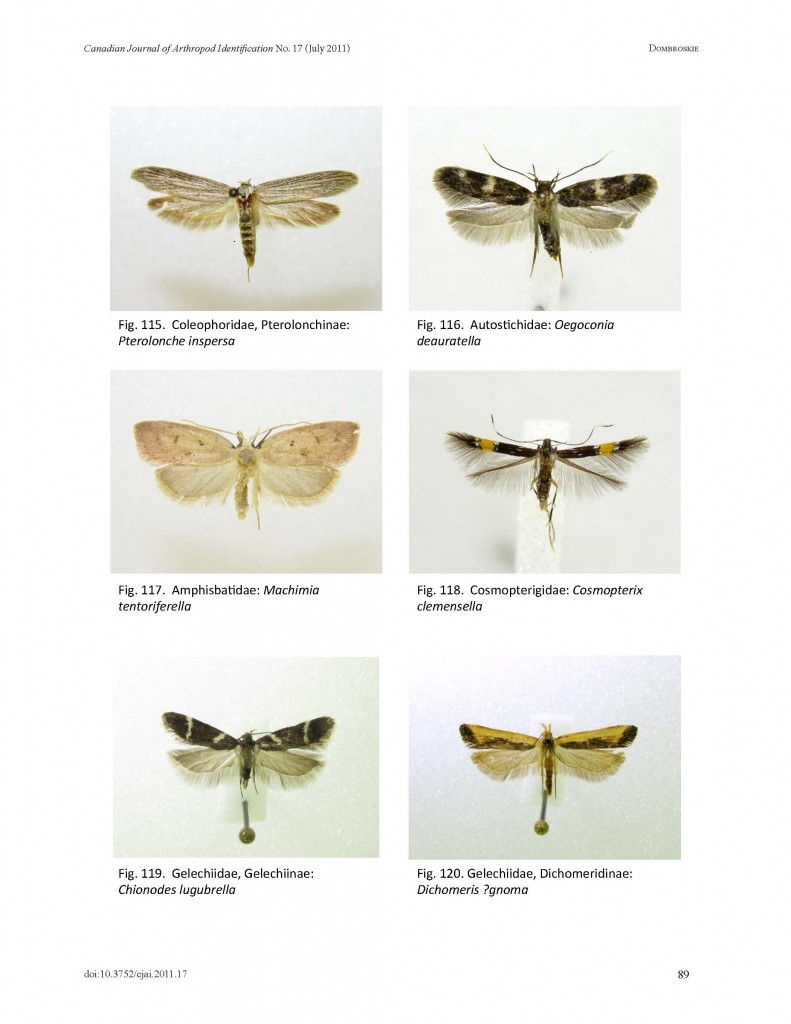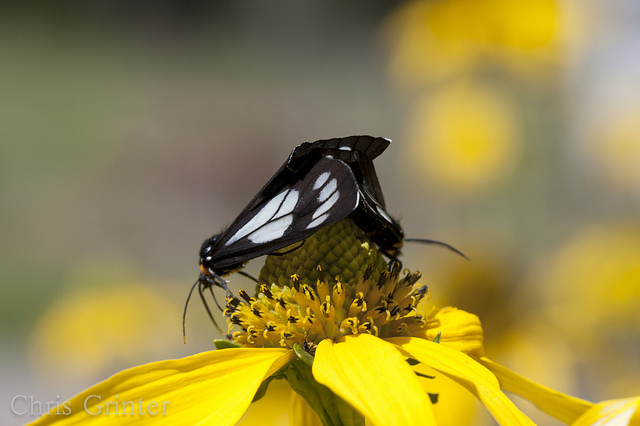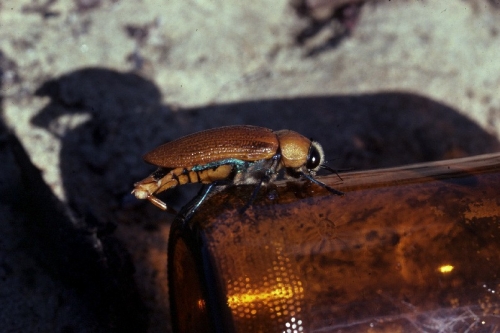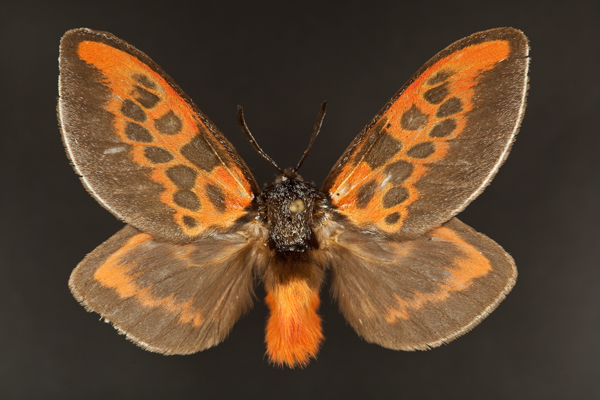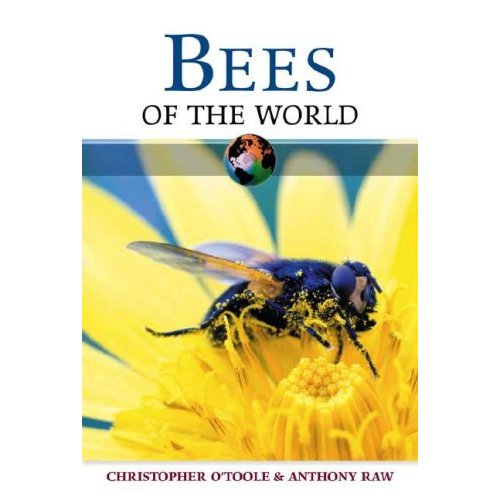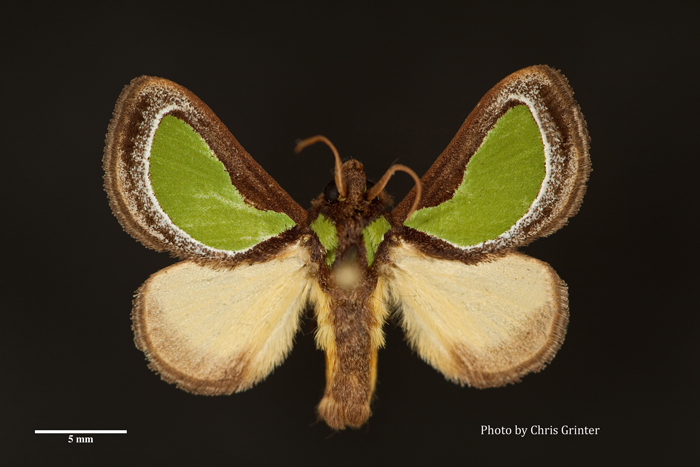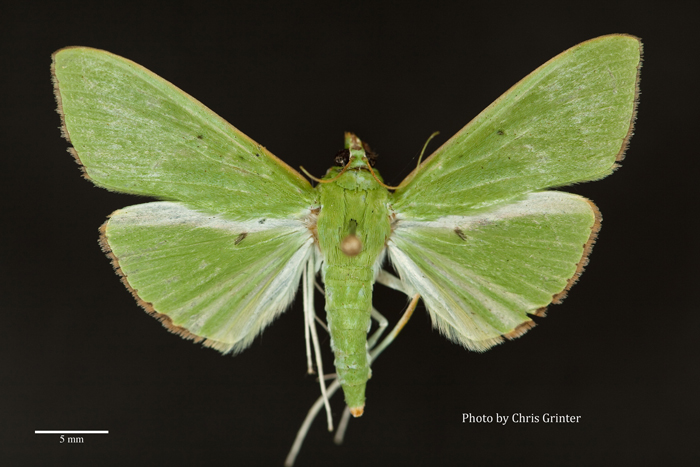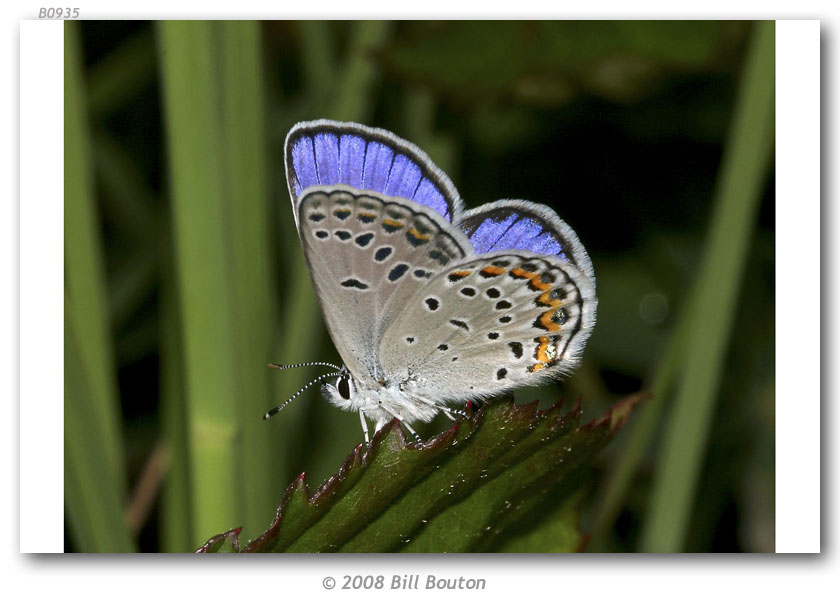A few months ago a magnificent key to the Lepidoptera of Canada (wszyscy) was published by Jason Dombroskie – Doktorantka z U. Alberta. Program dostępny jest dla użytkowników systemów Windows, więc nie miałem dobrą okazję poznać go jeszcze – but the PDF is available online and covers the same material. All known Canadian Lepidoptera are included in this key and most of them down to subfamily or even tribe! Są 222 taxa, 73 characters and 266 character states that help narrow things down. This is the first reference of its kind to accurately and completely cover the fauna of an entire country and the first to use a well illustrated and interactive key. It’s surprising how well known the leps are yet how few good references exist, almost none of which have a usable key. For everyone out there who has struggled to identify leps before this will be an incredibly helpful resource. Udzielony, there are likely a few US moths that could throw a wrench into the flow of things, but by and large I doubt there will be many problems.
|
W ten poniedziałek ćma jest Arctiinae, Gnophaela vermiculata. Te piękne ćmy latające w dzień były obfite na żółto Helianthus kwiaty około 9000′ w Narodowym Lesie Santa Fe, Nowy Meksyk. Gąsienice żywią się dzwonkami, ale dorośli wolą najwyższej jakości źródło nektaru w okolicy – co na szczęście sprawia, że zdjęcia są łatwe i atrakcyjne. Dziś jest smutny dzień w historii fizyki, the Tevatron accelerator at Fermi Lab in Batavia Illinois was powered down for the last time. Kiedyś drugi najpotężniejszy akcelerator na świecie (i najpotężniejszy w USA), the new LHC has made this beautiful machine obsolete. I can only assume the teams of scientists working at Fermi were hopeful for further funding, but the grand ol’ days of big-budget physics was crushed by congress in 1993 with the cancelation of the SSC. Off to Europe our physicists go! I have many fond memories of visiting Fermi with my grade school science class. Every year Mr. House would take us to explore the physics and nature surrounding the lab. I recall a feeling of privilege when you visited a real working lab where there were no public displays with cute goggly-eyed atoms, just chalk boards full of Feynman diagrams and 3 day old cups of coffee. But it was probably the fully restored big bluestem prairie that grew on and around the 4 mile collider ring was where I had the most fun and is what left a lasting impact on my scientific career. And so it goes, the evolution of science in the US. I have noticed this particular trend: 1) An active science facility with lots of research has a tiny museum for public tours. 2) The research loses funding and the tiny museum takes over. 3) The museum is renovated to be more “family” friendly and “interactive”, while science is pushed into the basements. 4) Whatever scientists are left (or students hired to act like scientists) are put under glass for the public to watch like strange creatures; all while true research fades into memory. The 2011 Ig Nobel uroczystość odbyła się wczoraj w Harvard’s Sanders Theatre. Nagroda jest sponsorowana przez nieprawdopodobne Badań, organizacja, która gromadzi fascynujące, dziwne, i wręcz zabawne prace badawcze, które triumf idei, że nauka nie jest nudna wszystko. Wśród tegorocznych wyróżnionych odbiorców znalazł się kolega entomolog i bloger David Rentz, który otrzymał IgNobel z biologii za odkrycie dokonane w 1983 z kolegą Darrylem Gwynne w australijskim buszu. Ku ich zaskoczeniu pewien styl brązowej butelki z wcięciami u podstawy (“przysadzisty”) okazał się nie do odparcia dla samców chrząszcza Buprestida
Gratulacje Dave i Darryl!
[youtube kZyIN23Cy4Y 480 360] The microscopic insect world is a very different one from ours and we rarely are given glimpses into it. Thanks in part to the impressive Phantom camera system and the Flight Artists project researchers have filmed the minute (1mm!) Trichogramma wasp (Chalcidoidea) in flight. These insects are egg parasites of Lepidoptera (amongst other groups undoubtedly) and can be used as effective biocontrol agents. As you’ll see in the video it’s been long understood that these wasps hitchhike on adult Lepidoptera waiting for fresh eggs, but it wasn’t know how they got there and if they were even flying onto the adult hosts. Stunningly, this wasp flaps its wings at ~350 times per second to achieve some astounding feats of movement. The biomechanics of this wing mechanism must be fascinating. Scroll ahead to 1:07 and watch the interaction of the two wasps – the one that flips off to the left of the screen moves in such a bizarre way it looks like bad CGI. I sure hope they record more species of minute flying insects!
W poniedziałek ćma jest oszałamiająca kobieta z neotropical Megalopygidae – Trosia nigrorufa. Ed Ross i Ev Schlinger klejnoty tego okazu w Peru w 1955, i słyszałem wiele opowieści o tych epickich wypraw. Nie mogę sobie wyobrazić, podróżując przez statek towarowy, jest już na sześć lub więcej miesięcy w czasie i opierając się głównie na rękę napisane korespondencji. To musi się czuć jak świat znacznie większym miejscu niż obecnie. This is a pretty epic fail. Chyba “młody dorosły” wytyczne dotyczące publikacji są mniej rygorystyczne “fakty”.
Thanks to Richard Lee Brown for first posting this on Facebook.
Wszyscy widzieliśmy ten dzień nadchodzi, wzrost z motyli, dzień będą na nas zemścić. Już nie będą biernie latać ich siedlisk, ponieważ są one zrównane z ziemią dla centrów i zanieczyszczone spływania. One particularly angry Karner Blue has submitted a letter to the Onion warning us that our time is about up. Endangered little Lycaenidae will join hands and come after us some quiet night while we’re asleep in our beds. We at the Lepidopterists’ Society have even made their list for failing to take action. Together we should act before it is too late – let us preemptively strike before the rise of the blues. Save your families! Burn those styrofoam containers, pave the prairies, drive your off-road vehicles and take a stand against these fluttering fanatics! (or we could just save them…) There has been a continuing discussion over the last few years of why so few women remain in science. While I’m not going to dive into that topic here, you can find great discussions tutaj, tutaj, tutaj i tutaj. I don’t however think anyone argues about why women don’t enter science in the first place, especially when you see things like this. Way to print that soul crushing stereotype right on the front of your daughters shirt, JCPenny. (przez Skepchick) |
Sceptycyzm |
